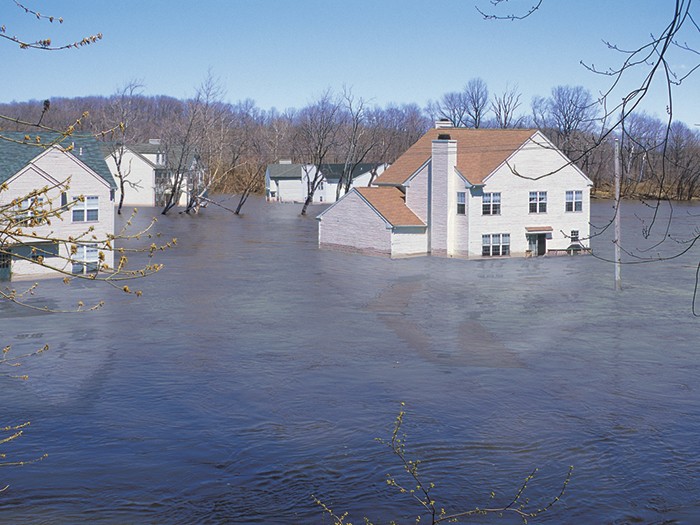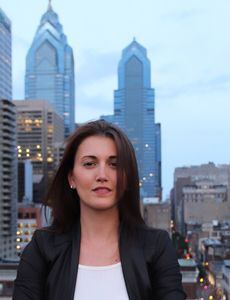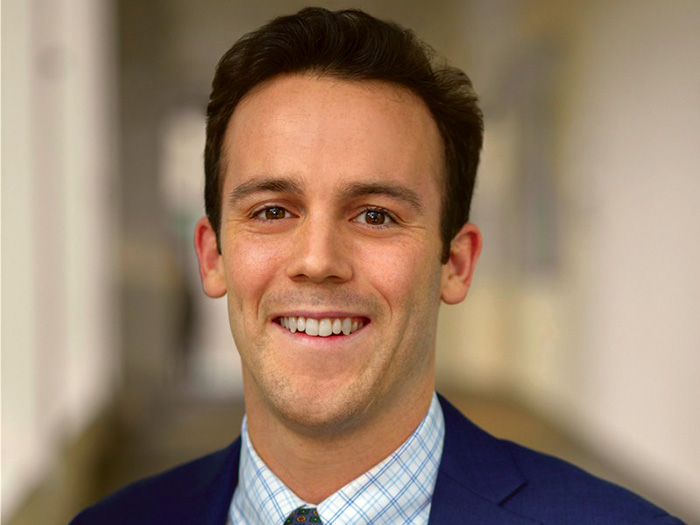Meet Dorothy: A Startup That Promises More Accurate Flood Modeling Than Ever Before

Arianna Armelli says she can map flood zones more accurately than the federal government, and she’s got a plan to simplify the flood insurance process for property owners, buyers and insurers.
It’s a tall task for anyone, but the 30-year-old entrepreneur thinks she’s got the right mix of machine learning, artificial intelligence and access to satellite imagery to fundamentally disrupt the market.
Armelli’s startup is called Dorothy, and she says her technology mapped flood damage from Hurricane Harvey 60% more accurately than FEMA maps did.
Armelli herself grew up in the Bronx, New York and was forever changed by Hurricane Sandy in 2012. While the damage to Lower Manhattan dominated headlines, she volunteered in the Rockaways, helping remove moldy drywall from wet basements.
When she spoke to homeowners, she kept hearing the same refrain: They were losing everything because they didn’t have flood insurance.
After Hurricane Harvey hit Houston five years later, the same stories emerged about people losing their homes — and Armelli dedicated her career to finding a solution.
Since then, she won the Pennovation Accelerator Growth Award from the University of Pennsylvania business incubator (which came with $3,000 and free co-working space); was named a semi-finalist in the Ashoka Changemakers and QBE North America Urban Resilience challenge; and pitched at the massive SXSW conference. ‘
Her Philadelphia company now has five employees and is poised for growth.
Risk & Insurance® sat down for a chat with Armelli to learn her plans to take Dorothy to the next level.
Risk & Insurance: What’s the driving philosophy behind Dorothy?
Arianna Armelli: We believe there is a moral obligation to better inform and protect our property owners and buyers of flood risk. Dorothy will do that better than what exists today.
R&I: How can you map floods better than the federal government?
AA: Most of the resources that FEMA is allocating are not necessarily toward remapping older flood zones; they go towards relief efforts. Plus, their process takes too long to keep maps updated.
It’s also about the data sources we’re able to include in our maps and frequency with which we’re able to collect data.
In today’s digital age, there’s more access to data companies and not-for-profits collecting large swaths of satellite imagery, cataloging that imagery at a more frequent pace than what was available years ago. That allows us to use machine learning and artificial intelligence to construct models at a faster pace.
We’re including more information into these models and also including more data points — that helps us create models that are far more accurate.
R&I: What was it about Hurricane Harvey that made you change career paths and launch Dorothy?
AA: When Hurricane Harvey hit Houston, I remember hearing that 80% of the damage from Harvey was outside of FEMA flood zones.
I said, ‘This is it. I’m going to focus on this.’
Why are flood zones so conservative? Why is the government not mapping this correctly? Why are people not aware that their homes could flood even if they live in inland areas like Houston?
Why aren’t they purchasing this kind of insurance?
Through that process we started realizing that the way FEMA is mapping flood zones is outdated. They can’t keep up with the way development occurs.
The last FEMA flood map they issued for Houston (when I started the research) was in 2008. Hurricane Harvey hits 10 years later and the amount of developed areas was much higher.
It triggered an idea: Can we map these areas more accurately and at a faster pace than the government?
R&I: Are you trying to compete with FEMA?
AA: By no means are we trying to compete with FEMA. We know they’re the standard.
But we have an obligation to the property owners to inform them of the potential risk, and in order to do that, you have to better understand historical information on flood zones, development of regions and how to get insurance into people’s hands in an easier and faster manner at an affordable price point.
R&I: We know it’s still early days, but what can you tell us about the product you’re building?
AA: We’re looking at ways to use this flood model to create a new product for the insurance market.
We plan to sell to large- and small-scale property owners, buyers and insurance companies. We’ve proven out the model, spoken to stakeholders in those industries and plan to launch that product in a few months.
R&I: You’re in the midst of a startup grind, running a company that’s pre-revenue with employees working for free. What’s that like?
AA: My team is working on passion. We really care about this.
I haven’t taken a salary on this. I’m working on an old architecture savings I had from years ago.
It was either buy a property or start a company, and I’m using it to start a company. Everyone on the team has done something similar. They’ve worked and saved enough to have their own runway to not take a paycheck.
R&I: Only 2.2% of venture capital funds go to female entrepreneurs. Do you feel like a woman in a male-dominated industry?
AA: I could stress over whether I received a “no” from an investor, because I’m a woman or because they’re just not interested.
But that’s not going to move the company forward.
We’re working on a really great idea and if you don’t want to invest in it — don’t.
But we’ll build it, make revenue and be successful. I’m trying really hard to not let those outside factors influence the decisions I’m making and trajectory of this company.
Investors will invest if they think they’ll make a return on it. If I have to work 10 times as hard to make that happen, I’ll do it.
R&I What do you want for Dorothy in the next five years?
AA: I’d like Dorothy to be the national standard for how people understand climate risk. I want my friend who’s about to buy a house to check Dorothy before she goes on Zillow. &










